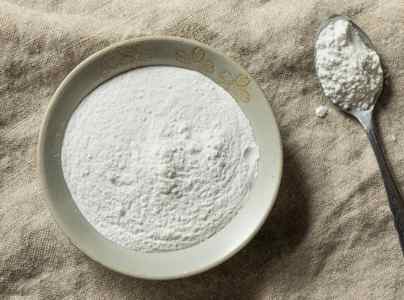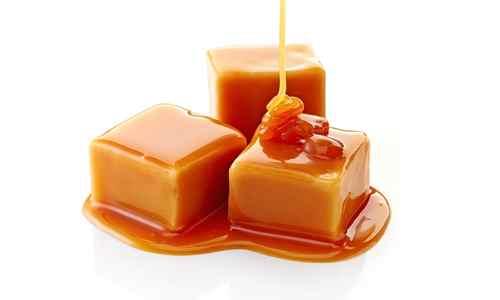In case you haven’t noticed, many hard candies use cream of tartar. It’s an odd ingredient that is included in many recipes for a variety of confections and sweets. In fact, it’s not creamy at all! You might be wondering, what the heck does cream of tartar do?
Why use cream of tartar in candy making?
Cream of tartar acts as a stabilizer. It inhibits sugar crystallization and keeps the consistency of candy smooth.
Basically, cream of tartar binds to sugar crystals, preventing the sugar crystals from clumping together into larger, (undesirable), crunchy sugar crystals.
This way, the sugar molecules are evenly spread across the candy instead of being in huge clumps here and there (gritty texture for example)
It is added to candies to help them maintain their shape and consistency. It keeps the sugar from crystallizing into random large chunks, which can cause the candy to become brittle and break apart easily.
As an acid, cream of tartar also breaks down sugar (sucrose) into glucose and fructose. This helps prevent crystallization.
That is why some icings and creams also use cream of tartar; it smoothens the consistency by preventing large crunchy sugar crystals from forming. Cream of tartar keeps creamy things, creamy.
If you are not using corn syrup in your hard candy recipe, a bit of cream of tartar could help with any consistency problems you may have.
What is cream of tartar?
Cream of tartar is an acidic compound that is a byproduct of winemaking. It residually sits on the bottom of wine barrels. However, it has a wide range of uses in baking and candy making. It is commonly used to stabilize egg whites, creams, fudges, and other similar confections.
Despite its name, cream of tartar is not exactly “creamy”. It comes in a dry, white powder that is commonly found in the spice aisle of grocery stores. So if you’re wondering where to buy cream of tartar, don’t go looking around the dairy aisle!

For more information on cream of tartar, check out this post by Wikipedia.
What else is the cream of tartar for?
Cream of tartar has a wide range of uses outside of candies, here are some other ways to use this flexible ingredient:
Caramels

Whether you’re making caramel sauce or a hard caramel, cream of tartar is a great final touch to smoothen out the caramel.
Play-doh
Some homemade Play-doh recipes end up crumbling or too sticky. Cream of tartar fixes most of these problems. With a bit of flour, cream of tartar, and some food coloring, this Playdough recipe makes for a fun project!

Sugar glass
For candy glass recipes, a clear, hard appearance is a must. Any crystallization in candy glass will result in a cloudy or “cracked” appearance.
With cream of tartar as a stabilizer, candy glass keeps a more uniform clear appearance.
Snickerdoodles or sugar cookies
For a first-hand experience with cream of tartar, trying it with snickerdoodles is a must. Recipes that include egg whites will benefit from using cream of tartar. As a leavening agent, cream of tartar will cause a foaming action which will soften and lighten up the cookie dough.
Cream of tartar stops the sugar in cookie dough from crystallizing. This allows for a chewier cookie rather than crunchy.
Meringues

Whipped cream
Whipped cream stays whipped longer and the cream is more firm. With cream of tartar, there is no graininess in the whipped cream.
How much cream of tartar is used in hard candy recipes?
Generally, when making candy, the ratio is 1/8 tsp of cream of tartar for each 1 cup of sugar.
Related Questions
Does cream of tartar have a taste?
By itself, cream of tartar has a slight metallic tin-like taste to it. It is an acid which is why it is commonly replaced by other acids such as citric or lemon juice.
Why is it called cream of tartar?
Tartar came from “bitartrate of potash” which is 14th century term for the wine deposits that come with fermentation. Source
Cream (since the 15th century) means “most excellent element or part” and “any part that separates from the rest and rises to the surface”. Source
Combine these two terms and somewhere along the road, cream of tartar became used to describe a purified form of tartar. Not to be confused with tartar sauce.

![How to Coat Gummy Candy in Sugar [Without Melting]](https://candyturf.com/wp-content/uploads/2022/10/how-to-coat-gummy-candy.jpg)
